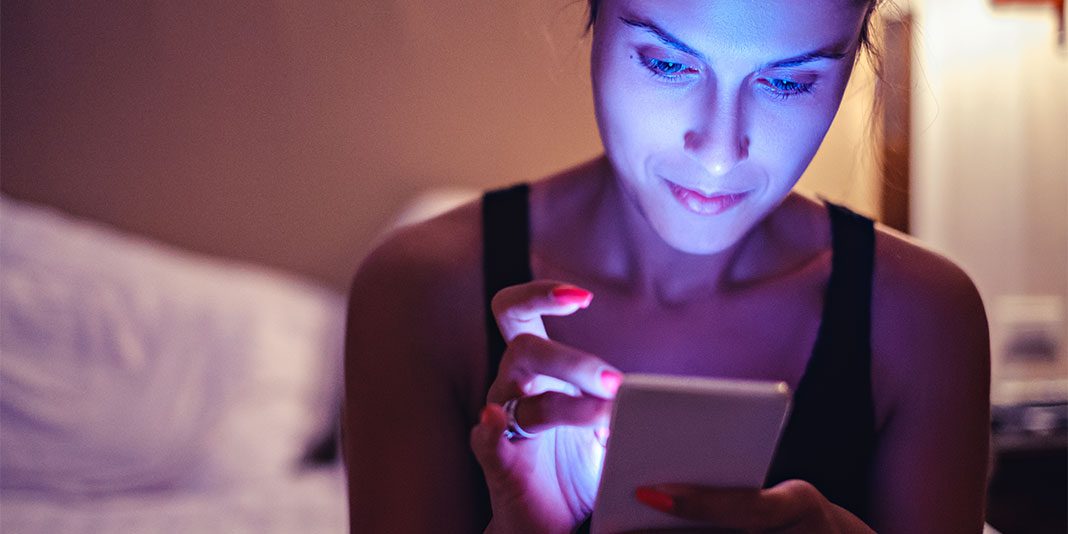With the rise in blue light glasses and blue light protecting facial mists and foundations, we just assume that the blue light beaming off of our screens is bad for you.
What is blue light? You know it is the light emitted from your screens and digital devices, but what is it? Blue light is the visible light spectrum you normally see in sunlight. It is also mitted from indoor lighting, daylight lamps, and most phones, tablets, and computers.
We know it can reduce our melatonin production and cause insomnia, but what about its effect on our skin? Does blue light really damage our skin? Is it like sunlight?
Some scientific studies show that blue light can lead to signs of aging.
Although you aren’t exactly absorbing UV rays when scrolling through Instagram, the light that is making contact with your skin is bright and damaging.
Sure, you can’t get a tan or sunburn from sitting in front of your computer, but it is said that sitting in front of a screen all day is equivalent to 20 minutes in direct sunlight during mid-day hours without wearing SPF. That is pretty intense.
Some experts claim that blue light can be more damaging to the skin in some ways than the sun. It breaks through the skin’s barrier and reaches the deepest levels of the skin that affect your collagen production. This can affect wrinkles, plumpness, and even darkness and pigmentation.
Apart from the direct impact blue light makes on your skin, the lack of melatonin your body produces when using blue light damages your skin as well. If you’re not sleeping well, your skin will suffer. It will look dull, tired, and lackluster because sleep is when your skin heals and regenerates. Your cells repair damage from the sun, acne scars, and other triggers at night while you sleep. If you aren’t sleeping, that repair process is lacking, and you see deeper signs of aging like lines, wrinkles, and dark circles under the eyes.
While blue light can improve your mood during darker months in winter and even increase your productivity during the day, too much of it at night is what leads to damage.
So, how can you reduce how much blue light interacts with your skin without quitting your job or wearing a ski mask to work?
Most devices that emit blue light have night modes or yellow light, which is calmer and less damaging to the skin. After a certain time in the evening, roughly when the sun sets, you can set your devices to that mode to reduce your intake of blue light. You can also reduce the brightness on your devices.
You can also introduce antioxidants into your skincare routine. They protect your skin from pollutants and damaging things like blue light. Both vitamin C and green tea are wonderful ingredients to look out for.
Eating enough fruits and vegetables is also an effective way to protect your skin from external damage.
With this, blue light is not correlated with skin cancer. So, although it can lead to increased signs of premature aging, it is not dangerous in the same way that sunlight is. Although you still want to protect yourself from too much exposure, you don’t necessarily need to layer your clothes or avoid your digital devices altogether.
Wearing sunscreen, which you should be wearing every day, even indoors, can help with blue light emissions from your devices. It is still the most essential aspect of your skincare routine, indoors or not. We should also note that mineral or physical sunscreens provide better protection than chemical sunscreens, so you want to opt for something that features zinc oxide or titanium dioxide.




































